


ANTOINE LAVOISIER 1743 -
xxxxxThe French chemist Antoine Lavoisier was one of the founders of modern chemistry. He carried out a series of brilliant quantitative experiments. In 1777 he showed that combustion was due to the presence of oxygen in the atmosphere -
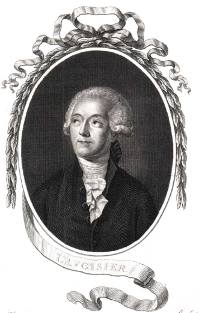 xxxxxThe French amateur chemist Antoine Lavoisier was born in Paris of a wealthy family. After studying at the College Mazarin, he then took up law and, soon after qualifying, became deeply involved in public affairs. Throughout his career he held a number of important public offices, and introduced marked improvements in the fields of economics, education, agriculture, and social welfare. His two major appointments were as a member of the Ferme Générale, the nation's main tax-
xxxxxThe French amateur chemist Antoine Lavoisier was born in Paris of a wealthy family. After studying at the College Mazarin, he then took up law and, soon after qualifying, became deeply involved in public affairs. Throughout his career he held a number of important public offices, and introduced marked improvements in the fields of economics, education, agriculture, and social welfare. His two major appointments were as a member of the Ferme Générale, the nation's main tax-
xxxxxBut his restless, inquisitive nature continually drew him to the study of science, and today, it is for his work in chemistry that he is remembered. As early as 1766 he was awarded a gold medal by the Academy of Science for a paper on street lighting for Paris, and two years later he was admitted to the Academy as an associate chemist. It was following a visit paid to him by the English chemist Joseph Priestly in 1774 that he investigated further what Priestly called "dephlogisticated air". Three years later he proved that air consists mainly of oxygen and nitrogen. By a series of quantitative experiments, he demonstrated that it was the new gas, l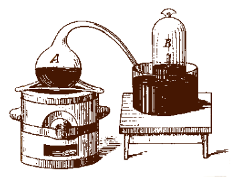 e principe oxygine -
e principe oxygine -
xxxxxIn 1783, working with the French scientist Pierre Simon de Laplace, he devoted much time to the study of physical problems, especially those related to heat, and he showed that carbon dioxide and water were the normal products of respiration and that respiration was, in fact, a form of combustion. Then four years later, working with the French chemist Claude-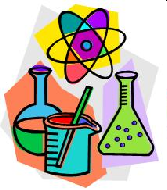 (Elementary Treatise of Chemistry). This listed all the chemical elements then known, defined the concept of an element, and gave an explanation of chemical compounds. It also gave evidence of the first and most basic quantitative law in chemistry, the Law of the Conservation of Mass, proving that there is no loss of mass (constant weight) during chemical change. Alterations and modifications there might be, but nothing was created or destroyed. And in the same year, 1789, he and others established the Annals de chimie, the first journal devoted to chemistry.
(Elementary Treatise of Chemistry). This listed all the chemical elements then known, defined the concept of an element, and gave an explanation of chemical compounds. It also gave evidence of the first and most basic quantitative law in chemistry, the Law of the Conservation of Mass, proving that there is no loss of mass (constant weight) during chemical change. Alterations and modifications there might be, but nothing was created or destroyed. And in the same year, 1789, he and others established the Annals de chimie, the first journal devoted to chemistry.
xxxxxApartxfrom his overriding interest in chemistry, he at one time accompanied the French geologist Jean-
xxxxxWith the coming of the French Revolution he continued to play an active part in the administration of the country but, in addition to his obvious wealth, privileged background, and his reputation as a "tax collector", he also fell foul of the left-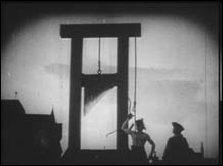 Paris because, at his suggestion, a wall had been built around the city in 1787 to put an end to smuggling. With the beginning of the Reign of Terror in 1793, Lavoisier, by then Director of the Academy of Science, feared for his life, despite his contribution to the welfare of the nation and the advance of science. He tried to escape, but was arrested in 1794. After a brief trial in May of that year, during which the Judge declared that the Republic had no need of scientists, he was guillotined the same day.
Paris because, at his suggestion, a wall had been built around the city in 1787 to put an end to smuggling. With the beginning of the Reign of Terror in 1793, Lavoisier, by then Director of the Academy of Science, feared for his life, despite his contribution to the welfare of the nation and the advance of science. He tried to escape, but was arrested in 1794. After a brief trial in May of that year, during which the Judge declared that the Republic had no need of scientists, he was guillotined the same day.
xxxxxLavoisier can rightly be considered one of the founders of modern chemistry. Quite apart from his discoveries, numerous and impressive though they certainly were, he brought to the study of chemistry an experimental skill and a thoroughness of research that set the future standards for this particular branch of science. In addition, he was a man of extraordinary ability in so many affairs of state. Few men have surpassed his width of administrative competence. The Italian-
xxxxxIncidentally, Lavoisier provided the names for both hydrogen and oxygen. Using ancient Greek, he called hydrogen "water maker" and oxygen "acid maker" (believing, wrongly, that oxygen was an essential element of all acids).
Acknowledgements
Lavoisier: by the English engraver James Caldwell (1739-
G3a-
Including:
Claude-
Berthollet

xxxxxAs we have seen, the French chemist Claude-
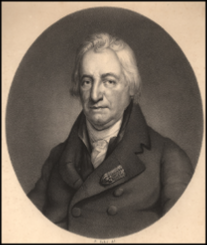 xxxxxAs we have seen, the French chemist Claude-
xxxxxAs we have seen, the French chemist Claude-
xxxxxIt was due to his knowledge in this field that in 1784 he was appointed inspector of dyeworks and director of the Gobelins tapestry factory. In addition, he made a significant contribution to the manufacture of chemical explosives, and the extraction of iron from ore. His major work was Essai de statique chimique (Essay on the State of Chemistry), published in 1803, the work in which he first put forward his ideas on chemical equilibria, and came close to explaining the law of mass action.
xxxxxHe became a member of the French Academy of Sciences in 1780, and was appointed professor at the École Normale in Paris in 1794. During the French Revolution he held a number of public offices, being at one time a commissioner of the national mint. In later years he taught chemistry to Napoleon, and was one of the scholars chosen to accompany him on his expedition to Egypt in 1798. He was made a senator in 1804, and a count under the empire.
xxxxxIncidentally, Bertholletxhad a long running dispute with his fellow countryman, the chemist Joseph Louis Proust (1754- 1799 to 1806.
1799 to 1806.
xxxxx…… During the Napoleonic Wars Berthollet attempted to use potassium chlorate as a substitute for saltpetre in the production of gunpowder. It did not work, but it was found that the compound made possible the making of coloured fireworks!


